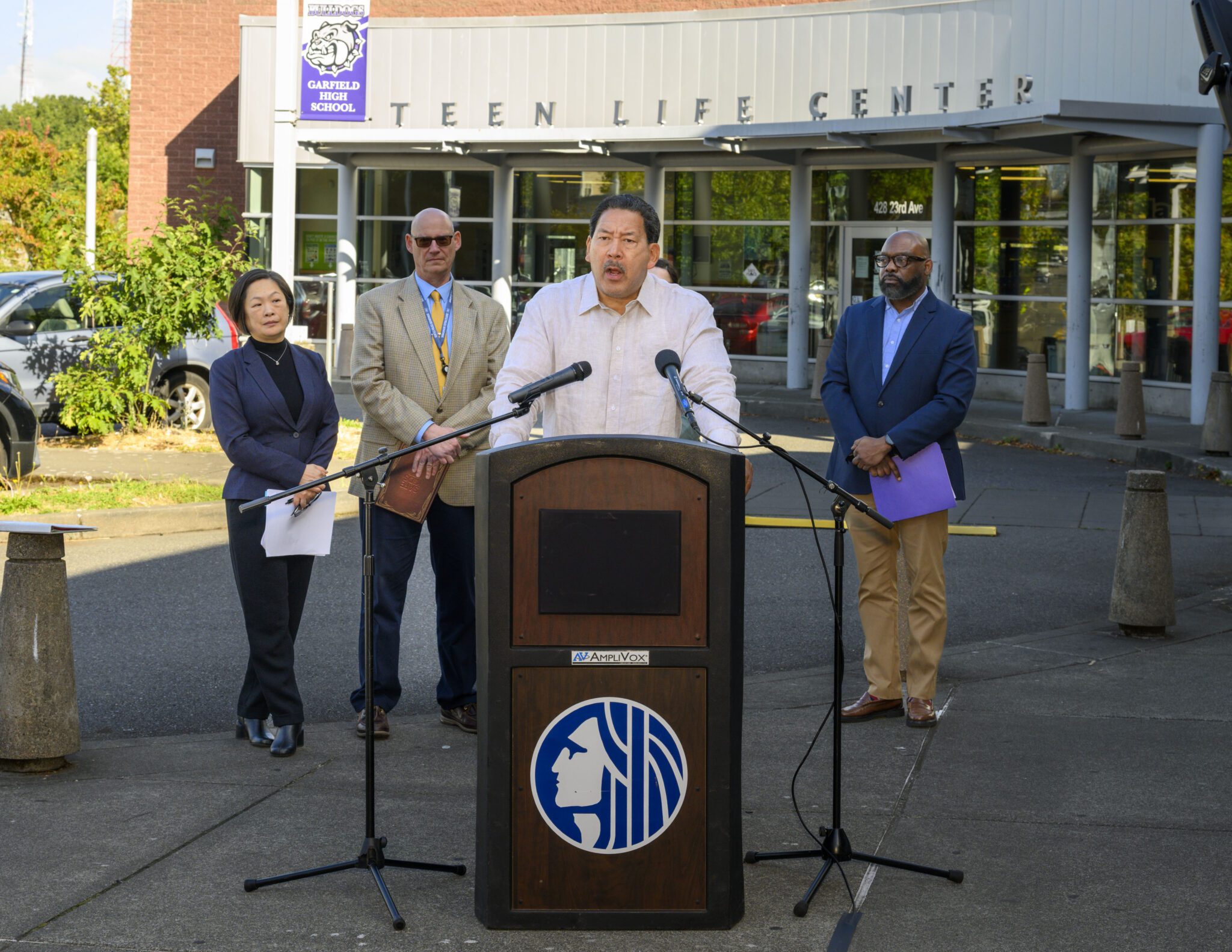
Funding will expand prevention, intervention, and restoration services to reduce gun violence and strengthen neighborhoods as part of the One Seattle Restoration Framework
Seattle—Today, Mayor Bruce Harrell announced the launch of the City of Seattle’s 2025 Community Safety Request for Proposals (RFP), a nearly $15 million funding opportunity to advance a connected continuum of prevention, intervention, and restoration services designed to reduce gun violence, stabilize individuals and families, and strengthen neighborhoods. This funding opportunity will officially open at 9:00 a.m. on September 23.
“Safety is the foundation for everything we want in Seattle, and it requires more than just responding after harm has been done. Our One Seattle Restoration Framework takes a compassionate and coordinated approach to public safety, and these critical community-based investments will help ensure our young people, schools, and neighborhoods have the resources and wraparound services that prevent violence,” said Mayor Bruce Harrell. “With trusted community partners leading this work on the ground, we can reach people and build connections in ways government and traditional law enforcement cannot. Gun violence has taken too much from us, and it will take all of us — every system, every partner, and every neighbor — to confront its root causes and create safer communities for everyone.”
The $14.7 million RFP will fund services that reach people where they are: in neighborhoods, schools, and hospitals.
- Intervention services focused on individuals and places driving the majority of gun violence.
- School safety services including safe passages, conflict mediation, and flexible, family resource funds.
- Supportive services offering case management, resource navigation, and warm handoffs to providers so participants connect to real, ongoing help.
Resources will be directed to communities facing persistent impacts, both from systemic and historical underinvestment, and from higher levels of gun violence identified in City and Seattle Police Department (SPD) data. These include the Central District, Southeast Seattle, Southwest Seattle, and North Seattle. By concentrating support where it is most needed, the City seeks to reduce retaliation, stabilize individuals and families, and expand opportunities for youth, young adults and neighborhoods.
Gun violence remains a public health crisis, with disproportionate impacts across age, race, and place. In 2024, Harborview Medical Center reported that 51 percent of gunshot victims were Black/African descent and 71 percent were 35 or younger—countywide data that underscores the distinct harm and the need for focused strategies in Seattle.
While SPD has collected over 5,500 firearms since 2022, and shots fired incidents have declined 16 percent and fatal gunshot incidents have declined 39 percent so far in 2025, sustained progress requires aligned investments that reach those at highest risk, stabilize families, and reduce chances for retaliation. Data shows that for communities impacted by significant gun violence; a relatively small number of individuals are generating the most harm. Mayor Harrell’s approach focuses on sustained and intensive services with this group while continuing broader prevention and restoration efforts benefiting the whole community.
This work builds on strong partnerships with community-based organizations, SPD, Seattle Public Schools, and Harborview Medical Center. The investment provides consistent funding, workforce development support, and infrastructure for coordination, including a City-led Safety Network, to strengthen collaboration and make services more connected and effective across the city.
“This funding opportunity reflects continuous improvement and what we’ve learned with our community partners, who are a vital part of this work,” said Tanya Kim, Human Services Department Director. “We’ve clarified roles across the continuum, tied outcomes to performance, and strengthened coordination citywide and across our provider network. Supports will be timely, trauma-informed, accountable, and connected.”
The One Seattle Restoration Framework is the Mayor’s comprehensive approach for a safer Seattle and is grounded in feedback from community and research-based best practices. It recognizes safety isn’t the responsibility of one team or one department and the City needs to address the very real challenges we face through coordinated investments, innovations, and partnerships.
What People Are Saying
Dr. Lee Hunt, Executive Director of Crime and Community Harm Reduction, Seattle Police Department
“This investment underscores SPD’s dedication to reduce gun violence, working shoulder to shoulder with community members, other city departments, schools, and hospitals. It also speaks to the City’s commitment to applying long-term strategies that produce tangible and sustainable results.”
Dr. Tarance Hart, Principal, Garfield High School
“At Garfield, student safety is supported through layered relationships and coordinated care. Safe passage support ensures students travel to and from school safely. Our violence interrupters help prevent conflicts, our case managers connect students and families with needed resources, and the Odessa Brown Clinic on campus provides mental health counseling with the support of our King County Behavioral Health Coordinator and community-based organizations. Together, these supports create a safer, more supportive environment where students are ready to learn.”
Laura Johnson, MSW, LICSW. Program Manager & Clinical Supervisor, Violence Intervention & Prevention Program, Harborview Medical Center
“Harborview’s Violence Intervention Program is part of a community-wide effort to disrupt gun violence. The program is supported by our city partners, the strong support of the King County Regional Office of Gun Violence Prevention, the Washington State Department of Commerce, and close collaboration with our community-based partners. Sustained funding is essential to ensure this vital work continues.”
###